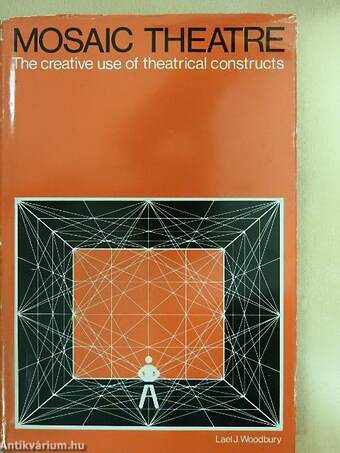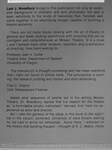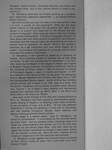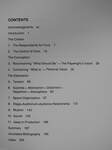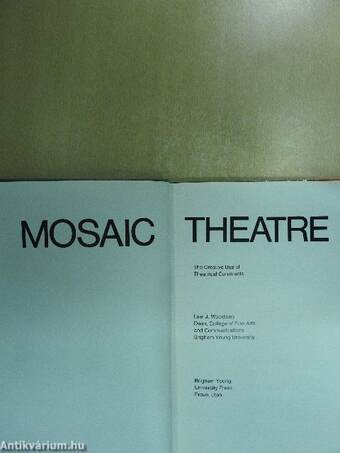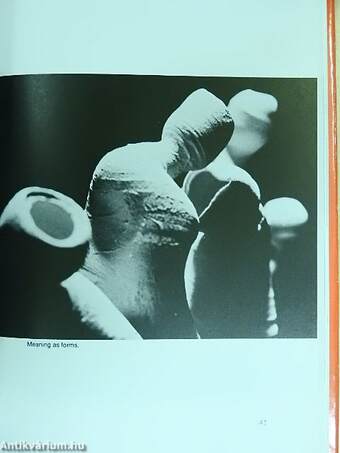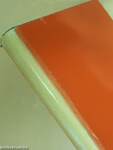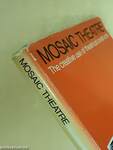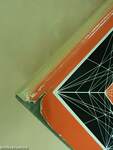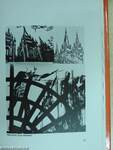1.062.439
kiadvánnyal nyújtjuk Magyarország legnagyobb antikvár könyv-kínálatát

VISSZA
A TETEJÉRE
JAVASLATOKÉszre-
vételek
Mosaic theatre
The creative use of theatrical construct
| Kiadó: | Brigham Young University Press |
|---|---|
| Kiadás helye: | Provo |
| Kiadás éve: | |
| Kötés típusa: | Vászon |
| Oldalszám: | 212 oldal |
| Sorozatcím: | |
| Kötetszám: | |
| Nyelv: | Angol |
| Méret: | 24 cm x 16 cm |
| ISBN: | 0-8425-0542-3 |
| Megjegyzés: | Fekete-fehér illusztrációkkal. |
naponta értesítjük a beérkező friss
kiadványokról
naponta értesítjük a beérkező friss
kiadványokról
Fülszöveg
Lael J. Woodbury brings to this publication not only an exten-sive background in dramatic arts and philosophy but alsó a keen sensitivity to the kinds of resources that, handled well, come together in an electrifying mosaic capable of stunning a theatre audience.
There are not many books dealing with the art of theatre in generál and fewer dealing specifically with directing that are so intelligent and comprehensive as Mosaic Theatre. It is a book I, and I believe many other students, teachers, and practitioners of directing, have been waiting for.
Professor Jean V. Cutler
Theatre Area, Department of Speech
University of Oregon
The manuscript is thought-provoking and has major elements that I have not found in similar texts. The scholarship is excit-ing, the research probing and honest and most stimulating.
Fred C. Adams
Utah Shakespeare Festival
Asked what sequence of events led to his writing Mosaic Theatre, Dr. Woodbury replied that his respect for the theatre as "a... Tovább
Fülszöveg
Lael J. Woodbury brings to this publication not only an exten-sive background in dramatic arts and philosophy but alsó a keen sensitivity to the kinds of resources that, handled well, come together in an electrifying mosaic capable of stunning a theatre audience.
There are not many books dealing with the art of theatre in generál and fewer dealing specifically with directing that are so intelligent and comprehensive as Mosaic Theatre. It is a book I, and I believe many other students, teachers, and practitioners of directing, have been waiting for.
Professor Jean V. Cutler
Theatre Area, Department of Speech
University of Oregon
The manuscript is thought-provoking and has major elements that I have not found in similar texts. The scholarship is excit-ing, the research probing and honest and most stimulating.
Fred C. Adams
Utah Shakespeare Festival
Asked what sequence of events led to his writing Mosaic Theatre, Dr. Woodbury replied that his respect for the theatre as "a formidable artistic instrument" derived, first, from his ex-perience as actor and director.
But I date the genesis of the ideas in this book to the night I sat in the vacant, darkened, University of lowa theatre waiting for my cast to arrive for rehearsals. Alone there, I reflected on the history that building housed. I thought of E. C. Mabie, Hallie
Flanagan, Harold Hansen, Tennessee Williams, and others who had worked there, and of their earnest eflorts to create a sig-nificant art.
Dr. Woodbury described the theatre building as a complex and awesomely expensive mechanism — an almost limitless artistic resource.
But what precise use was I to make of that mechanism? Was I, in truth, a pander for the playwright? What was the exact artistic mission of that space that lay before me? Was it de-signed in its present form especiaily for the delivery and per-ception of language? Does language require that kind of space for its perfect embodiment? If theatre is language, shouidn't its ideál space take even more account of acoustics, and shouidn't movement and the mise-en-scene be minimized so as never to distract from or embellish the Word? What is the director's essential art—the irreducible stuff from which theatre art is made? /Ve pondered that question for a decade, and this book describes the answers I have found.
Dr. Woodbury is well qualified to speak as an authority on theatre. As a university student of dramatic arts at Utah State University, he won two scholarships for excellence in his field. After receiving his Master of Arts degree in theatre and English at Brigham Young University, he became a University Fellow at the University of Illinois, where in 1954 he received his Doctor of Philosophy degree — again in theatre and English. In 1971 as a member of the faculty at BYU he was given the prestigious Kari G. Maeser Research and Creative Arts Award and in 1975 the Distinguished Service Award. Author of thirty-four scholarly journal articles and reviews in his field, alsó of a book, Play Production Handbook, and co-author of another book, Mormon Arts, Volume 1, he is listed in many national and international biographical volumes such as Who's Who in the World and Who's Who in the American Theatre.
Now dean of the College of Fine Arts and Communications at BYU, Dr. Woodbury has filled numerous administrative assign-ments relating to theatre — at Bowling Green State University, at the University of lowa, and at BYU. He has had extensive experience in acting and speaking, in films and on recordings, and has traveled throughout Canada, North America, and Mexico, visiting prominent theatre centers.The stage is a sacred space, says Dr. Woodbury, an arena for concentration. It is enlivened by the concrete stimuli we place there. And our greatest artistic challenge today is to forget our preconceptions and decide, as if for the first time, what we can and should place there. Only then, when we can regard the theatre mechanism as though it were newly minted, can we discover its best use. And only then, I believe, will we create art indigenous to the rich resources we command.
Dr. Woodbury brings together that concrete stimuli he speaks of here, fitting it piece by piece into a work that is art itself: Mosaic Theatre. Vissza



